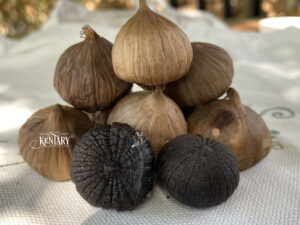Gluten-free diets are becoming increasingly popular, especially due to the growing awareness surrounding gluten intolerance. In turn, this has fueled a rapid rise in the mainstream availability of gluten-free food options. In fact, the gluten-free food industry grossed over $15 billion in sales in 2016. Have you heard of gluten in food? This article reviews everything you need to know about gluten.
1. What is gluten?

Gluten is responsible for the soft, chewy texture that is characteristic of many gluten-containing, grain-based foods – google image
Gluten is a family of storage proteins — formally known as prolamins — that are naturally found in certain cereal grains, such as wheat, barley, and rye .Many different prolamins fall under the gluten umbrella, but they can be further classified based on the specific grains in which they’re found.
For instance, glutenins and gliadins are the prolamins in wheat, secalins are in rye, and hordeins are in barley.
Gluten offers a variety of functional culinary benefits and is responsible for the soft, chewy texture that is characteristic of many gluten-containing, grain-based foods.
When heated, gluten proteins form an elastic network that can stretch and trap gas, allowing for optimal leavening or rising and maintenance of moisture in breads, pasta, and other similar products.
Because of these unique physical properties, gluten is also frequently used as an additive to improve texture and promote moisture retention in a variety of processed foods.
Gluten-free diets are more common than ever, but gluten does not pose a health risk to the majority of the population. That said, people with celiac disease cannot tolerate gluten and must eliminate it from their diets to avoid harmful, adverse reactions.
Foods that contain gluten

Gluten may be found in a variety of whole and processed foods, including:
- Grains: whole wheat, wheat bran, barley, rye, triticale, spelt, kamut, couscous, farro, semolina, bulgur, farina, einkorn, durum, wheat germ, cracked wheat, matzo, mir (a cross between wheat and rye)
- Processed grain-based products: crackers, bread, breadcrumbs, pasta, seitan, wheat-containing soba noodles, some veggie burgers, cookies, pastries
- Other foods and beverages: barley malt, malt vinegar, soy sauce, certain salad dressings, sauces or gravies thickened with flour, bouillon and some broths, certain spice blends, flavored chips, beer, certain kinds of wine
Because gluten is often used in food production as a thickener or stabilizer, it’s not always clear whether a particular food contains it.
What’s more, many commercial food operations share preparation equipment with gluten-containing foods. Thus, even if a food is inherently gluten-free, it could be contaminated with gluten during processing.
If you follow a strict gluten-free diet and are unsure about a particular food’s gluten status, check the package for a gluten-free label or contact the manufacturer prior to purchasing it.
Who should avoid gluten?
Celiac disease is an immune system disorder that is believed to affect around 3 million Americans. It normally appears in childhood, but it can affect people at any age. The exact cause remains a mystery, but it appears to run in families.
In a person with celiac disease, gluten causes the immune system to react, resulting in damage to the absorptive surface of the small intestine.
This prevents vital nutrients – fats, carbohydrates, proteins, vitamins and minerals – from being absorbed into the bloodstream.
The gluten protein that causes this reaction are the prolamins known as gliadin, secalin, and hordein. Wheat contains gliadin, barley secalin, and rye hordein. Some varieties of oats may contain a form of gluten, and some types may have it because of cross-contamination. Crossbred grains, such as triticale, can also contain gluten.
People who need to avoid gluten should inspect labels carefully before they buy.
Celiac disease can lead to:
- Chronic diarrhea
- Weight loss
- Fatigue
- Anemia
- Itchy, blistering skin rash
- Depression and irritability are common symptoms, especially in children
Many people with celiac disease have no symptoms, but complications can arise in time.
Possible complications include:
- Intestinal cancers
- Short stature and stunted growth
- Infertility and miscarriage
- Nutritional deficiencies
- Osteoporosis
There is no cure for celiac disease. The only effective treatment is to avoid foods and products that contain gluten.
How to go gluten free
-1024x576.jpg)
Avoiding gluten is not easy. Wheat, rye, and barley feature in many basic foodstuffs, including bread, breakfast cereal, and pasta. Giving up gluten means finding a substitute for these products.
Foods that tend to be safe to eat include:
- Fruits
- Vegetables
- Raw, plain meat and poultry
- Raw or frozen plain Fish and seafood
- Dairy
- Beans, legumes, and nuts
Rice is a good source of carbohydrate, but it is worth checking the label in case there is any cross contamination.
Other options include:
Quinoa is a healthy alternative to wheat products.
- Cassava
- Corn, or maize
- Soy
- Potato
- Rutabaga
- Tapioca
- Beans
- Sorghum
- Quinoa
- Millet
- Buckwheat groats, or kasha
- Arrowroot
- Amaranth
- Teff
- Flax
- Chia
- Yucca
- Gluten-free oats
- Nut flours
Source: Healthline, Medicalnewstoday
READ MORE:
- THERE ARE 5 FOODS THAT PRESENT A HIGHER RISK OF FOOD POISONING
- 5 THINGS THAT CAN HAPPEN IN YOUR BODY WHEN YOU EAT LESS MEAT
- DISCOVER FLAVONOIDS AND HEALTH BENEFITS OF FLAVONOIDS
-
 SOLO BLACK GARLICVND195,000 – VND740,000
SOLO BLACK GARLICVND195,000 – VND740,000 -
 Colloidal Nano Silver 7ppmVND120,000 – VND1,000,000
Colloidal Nano Silver 7ppmVND120,000 – VND1,000,000 -
 Colloidal Nano Silver 10ppmVND150,000 – VND1,200,000
Colloidal Nano Silver 10ppmVND150,000 – VND1,200,000 -
 SALBA CHIA SEEDS KENTARYVND50,000 – VND170,000
SALBA CHIA SEEDS KENTARYVND50,000 – VND170,000 -
 SUGAR FREE SOFT-DRIED CANTALOUPEVND160,000 – VND585,000
SUGAR FREE SOFT-DRIED CANTALOUPEVND160,000 – VND585,000




